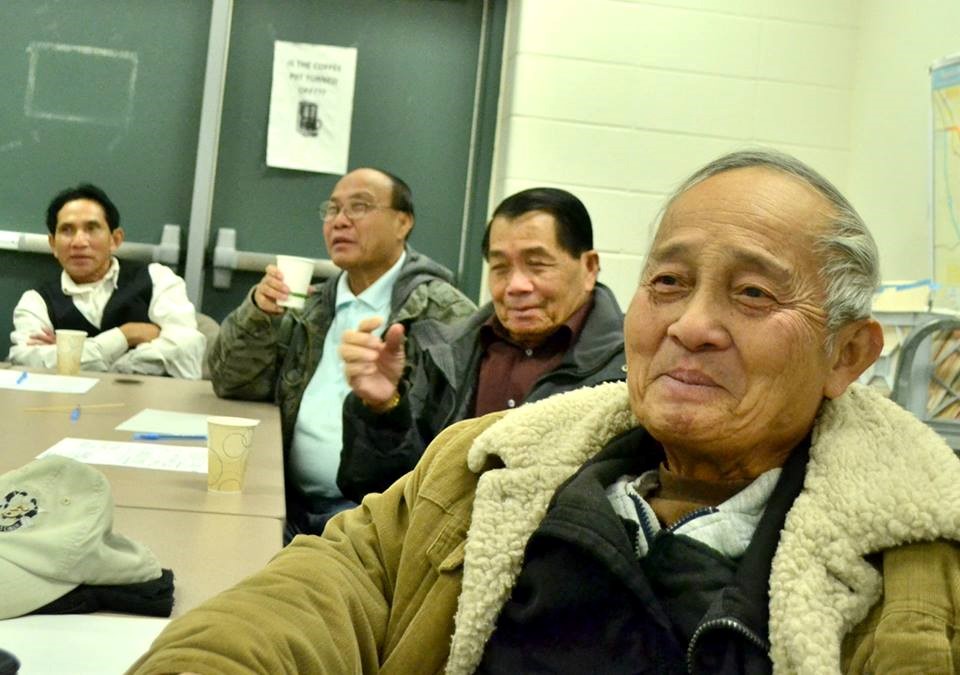Last year, with the help of partners like the Cambodian Association of Greater Philadelphia (CAGP) and the Lao Assistance Center of Minnesota, SEARAC collected over 400 comments in four languages from Southeast Asian American (SEAA) elders across the country. The comments were submitted in response to a call from the Administration for Community Living (ACL) for input on guidance for state plans on aging, which support programming for older Americans.

Southeast Asian American elders face high rates of poverty and limited English proficiency. (SEARAC.org)
The comments elevated the voices of our Cambodian, Hmong, Laotian, and Vietnamese elders, whose stories are largely unknown or misunderstood by policymakers. Nearly all (98%) Southeast Asian Americans over the age of 55 were born outside the US, and between 85-90% of these elders speak English “less than well.” Not only that, but nearly half of Vietnamese and around one third of Cambodian, Hmong, and Laotian elders live in homes where no one speaks English, making it very different to understand and access complicated government benefits and services. Southeast Asian American elders are also twice as likely to live in poverty than American elders overall. 22% of Hmong and Cambodian elders, 18% of Laotian elders, and 17% of Vietnamese elders live in poverty in the United States, compared to 9% of elders overall. That means many of our parents and grandparents struggle to pay for basic necessities like food and utility bills. Many are dependent on social services like Medicaid/Medicare, food stamps, and low-income energy programs, which can require navigating complex bureaucracies.
The elders who submitted comments illustrated these statistics. Some talked about the difficulty they have accessing information about essential services:
“I cannot get services by myself. It’s too hard to speak to a machine on the phone. I don’t understand them, and they don’t understand me.”
“My parents need help. Life is hard with no English. They do not offer Khmer anywhere else to help us.”
Others talked about the crucial role that community-based organizations like CAGP play:
“My children live far away. They cannot help me. I go to CAGP for everything. It’s even hard to talk to someone on the phone.”
“CAGP is very important to me. I utilize their social services/case management services on a regular basis for SNAP, medical assistance, and language assistance. I can’t get this help elsewhere.”
You can find more comments and information on the experiences of SEAA elders in the infographic we created for the DEC.

SEAA older adults at the Lao Assistance Center of MN. (laocenter.org)
But SEAA elders also have among the highest rates of naturalization in the Asian American community. While 66% of all Asian Americans become naturalized citizens, about 80% of Vietnamese elders, 77% of Hmong elders, 73% of Laotian elders, and 70% of Cambodian elders are naturalized. By sharing these comments with governmental agencies and policymakers, our elders are exercising their rights and duties as American citizens, and we are proud to uplift their voices.
On February 23rd, we will join the Diverse Elders Coalition on Capitol Hill in Washington, DC, to release the DEC’s new report, “Aging with Health and Dignity: Diverse Elders Speak Up,” based on the over 5,000 comments collected by the coalition in 2016. Older adults, policymakers, and Coalition leadership will share stories and findings from the report to educate Congress about the challenges and resiliencies of American Indian/Alaska Native elders; Asian American, Pacific Islander, and Native Hawaiian elders; Black and African American elders; Hispanic and Latino elders; and LGBTQ elders. You can RSVP here if you’d like to join us on Capitol Hill, or visit the Diverse Elders Coalition website to learn more.
Southeast Asian American elders have a unique history and experiences, but they share similar challenges and barriers with many other communities of color, immigrant communities, and LGBTQ elders. By joining in coalition with our DEC partners, we bring an undeniably powerful collective voice to Capitol Hill, and we will urge policymakers to make sure our elders can age with dignity and health.
The opinions expressed in this article are those of the author and do not necessarily reflect those of the Diverse Elders Coalition.

